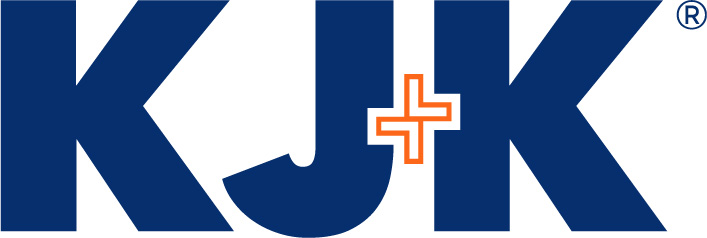By Rob Gilmore & Janet Stewart
 With the Fourth of July now in the rear-view mirror, summer is well underway and back-to-school is already looming large. In preparation—and as usual—Big Box stores are tearing down seasonal summer displays, and in their place, putting up aisles full of colorful backpacks, binders, folders, pens, pencils, lunch boxes and other school supplies.
With the Fourth of July now in the rear-view mirror, summer is well underway and back-to-school is already looming large. In preparation—and as usual—Big Box stores are tearing down seasonal summer displays, and in their place, putting up aisles full of colorful backpacks, binders, folders, pens, pencils, lunch boxes and other school supplies.
While the timing of the appearance of these back-to-school essentials feels predictable and normal, this year, in particular, the arrival of these school supply displays and items is also causing an underlying unease in the minds of many for one simple, undeniable reason: In light of COVID-19, back-to-school is still a giant question mark.
The difficulties presented by the ongoing global pandemic are apparent for school districts, teachers and parents. As we speak, decisions are being made on a school-district-by-school-district basis about how to best balance the ongoing health and safety concerns for students and teachers with the need to accomplish requisite educational goals. Depending on the approach selected by a relevant school district, parents and teachers are having to perform a similar balancing act on a family-by-family basis.
Employers Feeling Back-to-School Uncertainty
As many of these same parents and families are also a part of the workforce, this continued uncertainty will—and, in many ways, already is—trickling down to employers, thus raising many reasonable and natural questions. For example:
- What kinds of accommodations and leave options must or can an employer provide to employees who live in a school district that is not returning to in-person education for the fall and cannot work remotely or in-person due to a lack of available childcare?
- How is an employer to handle situations where eligible employees already exhausted their 12 weeks of available leave under the Family First Coronavirus Response Act (FFCRA) during spring 2020, but still have the same needs once school starts again in the fall? [For further information as to the FFCRA, please see our initial post (as further clarified in this post and updated in these subsequent two posts.)]
- What will happen if employees need leave accommodations on an irregular basis due to schools opening and closing in-person education in response to positive COVID-19 cases or fluctuations in state-wide mandates?
- What about an employer who does not fall under the mandates of the FFCRA—how should they address similar employment issues that will almost assuredly arise commencing in the fall?
These are all great questions. Unfortunately, at this point, most don’t have straightforward answers.
Employers Should Prepare Now for Fall 2020
For employers, one thing is undeniable: now is the time to start thinking about these questions and preparing a strategy for how to address these issues. In doing so, employers should consider taking several steps sooner than later.
- Employers should start opening a dialogue and collecting information about employees’ plans and potential needs, so as to be in a position to easily implement and cycle through various options should circumstances arise which require the same. In this way, employers can react intentionally versus reacting out of necessity. For example, some employees might already know that their children will be attending school on a hybrid (i.e. part-remote, part-in person) schedule, thus potentially necessitating some level of flexibility to their work schedule. This is good information to know and problem-solve around now versus down the road when the stakes are higher. Employers should collect said information on a company-wide level, and should, in no circumstances, limit their inquiry to those employees who had leave or accommodation needs in spring 2020.
- Employers should continue to prioritize flexibility in their employment-related operations and policies as opposed to rigid compliance, and ultimately, be prepared to pivot. The reality is that no one is prepared for what is to come in fall 2020 because it remains completely unknown to us all. As a result, even once an appropriate plan and path for fall 2020 has been chosen at a corporate level, it is almost a certainty that reaching the finish line to the end of the year is not likely to be a linear endeavor. Employers will be best served to recognize and, as much as possible, embrace this reality and the need for flexibility and creativity when it comes to planning for and accommodating individual employees’ needs.
- Employers should be thoughtful in their messaging and communications with employees about the impending uncertainty surrounding Fall 2020. Acknowledging the collective unease and the fact that everyone is navigating the current situation without a playbook may help encourage and set the tone for proactive conversations as opposed to eleventh-hour angst.
- If not already done, employers should take steps now to identify a legal professional to turn to when employment-related questions arise. Quite frankly, very few legal questions have a simple answer right now. In fact, many “typical” situations require a nuanced and fact-specific approach and response in light of COVID-19. Having a trusted advisor in your corner is critical to providing a quick and confident response to the dynamic circumstances that fall 2020 will unquestionably present to employers.
At KJK, we have the experience and resources to help employers navigate the roller coaster that is conducting business in this ongoing global pandemic. We are here to provide the legal guidance you need, when you need it. For further guidance on back-to-school issues, please contact Rob Gilmore (rsg@kjk.com), Alan Rauss (amr@kjk.com), or another member of our Labor & Employment team.
